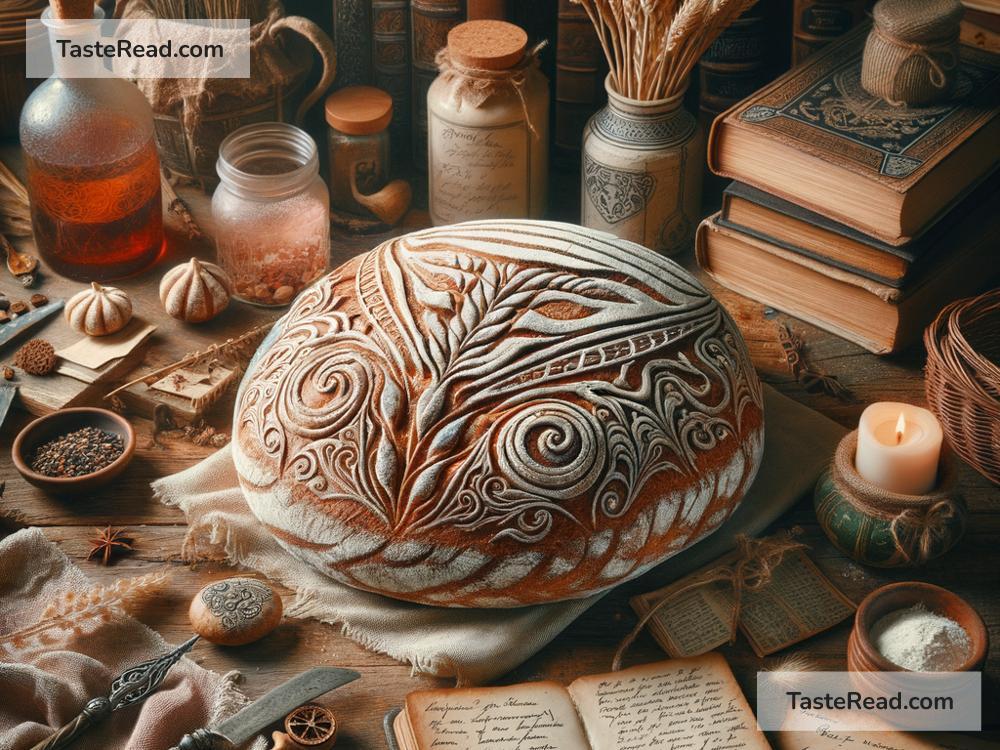The Bread That Tells Stories
Once upon a time, in the cozy little village of Crustington, there lived a baker named Thomas. He wasn’t just any baker—he was known far and wide for his magical bread. It wasn’t the kind of magic that sparkled or floated, but rather, the kind of magic that spoke. Yes, his bread could tell stories.
It all began on a rainy Wednesday morning when Thomas discovered an ancient recipe book tucked away in the attic of the bakery. The book smelled of old parchment, and its pages rustled like whispers. Among the usual recipes for rye and sourdough, one page stood out: “The Storytelling Bread.” The recipe was simple enough—flour, water, yeast, and a pinch of imagination, it said. Little did Thomas know, this recipe was about to change his life forever.
The First Loaf
Curious and full of excitement, Thomas mixed the ingredients, kneading the dough with extra care. As the bread baked in the warm oven, the wonderful aroma filled the bakery and seeped into the streets. Villagers passing by sniffed the air and smiled. But the real surprise came when the bread cooled and Thomas sliced into it.
The first loaf told the story of an old fisherman named Gregory, who had once lived by the sea near Crustington. The bread’s voice wasn’t loud—it sounded like gentle whispers heard only by those holding a slice. Gregory’s tale was full of adventure, storms, and an encounter with a magical dolphin that saved his ship.
Thomas was shocked and thrilled. Could it be possible that his bread truly told stories? He tested the recipe again, baking another loaf. This time, the bread spoke of a young girl named Marla who had traveled through enchanted forests searching for the Golden Acorn. Her journey was filled with bravery, kindness, and cleverness.
Word spread quickly. Villagers soon crowded Thomas’s bakery, eager to hear the bread’s tales. Families gathered around the dinner table, their evenings brightened by enchanted stories of knights, lost kingdoms, friendship, and hope—all told by the bread. Thomas began to call his bakery “The Story Loaf,” and it became the heart of the village.
The Mystery Behind the Stories
People started to wonder: Where did the stories come from? Some believed the bread had memories of the old village. Others thought it was the imagination of Thomas spilling into the dough. Children liked to imagine tiny fairy-like creatures living inside the oven, whispering stories into each loaf.
Thomas had no answers either. All he knew was that the stories were always unique—sometimes joyful, sometimes sad, but always meaningful. And somehow, the bread seemed to know exactly what the villagers needed to hear. Mrs. Willow, an elderly woman who had lost her cat, found comfort in a story about a lost puppy who found its way home. Little Jacob, who was afraid of the dark, ate a slice of bread that told him a story about stars that watched over him every night.
The Day the Stories Stopped
One morning, Thomas woke up early as usual, put on his apron, and began baking. But when he sliced the bread that came out of the oven, it was silent. No whispers, no stories—just plain bread.
Thomas panicked. “What happened? Did I do something wrong?” he wondered. The villagers were just as upset. “We need the stories,” they cried. “Your bread brings our hearts together!”
Thomas tried everything—adding more flour, using different yeast, and even doubling the pinch of imagination mentioned in the recipe. But the bread remained quiet, as if it had lost its voice.
Feeling defeated, Thomas closed the bakery early and went for a walk. The village felt quieter than usual, with people shuffling around, missing the magic they had grown to love. As Thomas wandered toward the river, he realized something important. The bread wasn’t just telling stories—it was bringing people together. Neighbors who had once been strangers were now friends, bonded by the tales they shared. The bread itself had taught the village the power of storytelling.
A New Idea
Inspired by this realization, Thomas returned to his bakery the next day. He called the villagers together. “Maybe the bread has stopped telling stories because it wants us to tell our own,” he said. “Every one of us has a story inside us.”
Thomas began hosting “Story Evenings” at the bakery. People would come, share their own tales, and eat the bread. First, it was shy little Anna, who told a story about her pet rabbit. Then Mr. Clark shared memories of growing up in the village. Each night, laughter and tears filled the bakery as the villagers realized the magic of their own voices.
Over time, the bread began speaking again, as though it was proud of the village’s stories. But even when the bread was quiet, Crustington thrived with stories. Thomas learned that sometimes magic can live in a loaf of bread—and sometimes, it lives in the hearts of people willing to share.
And so, in the village of Crustington, storytelling became the greatest tradition of all, all beginning with a loaf of magical bread.
The End


